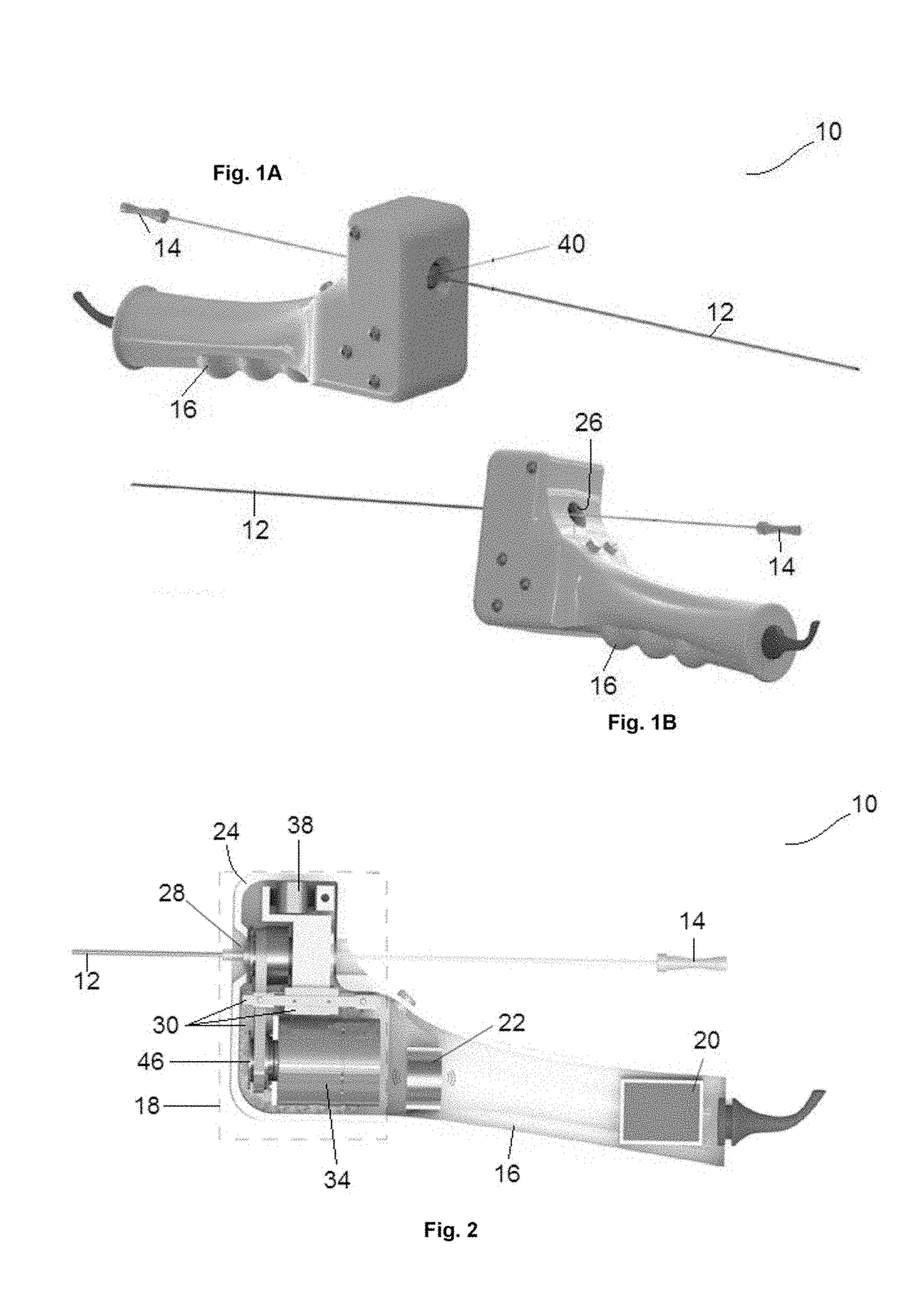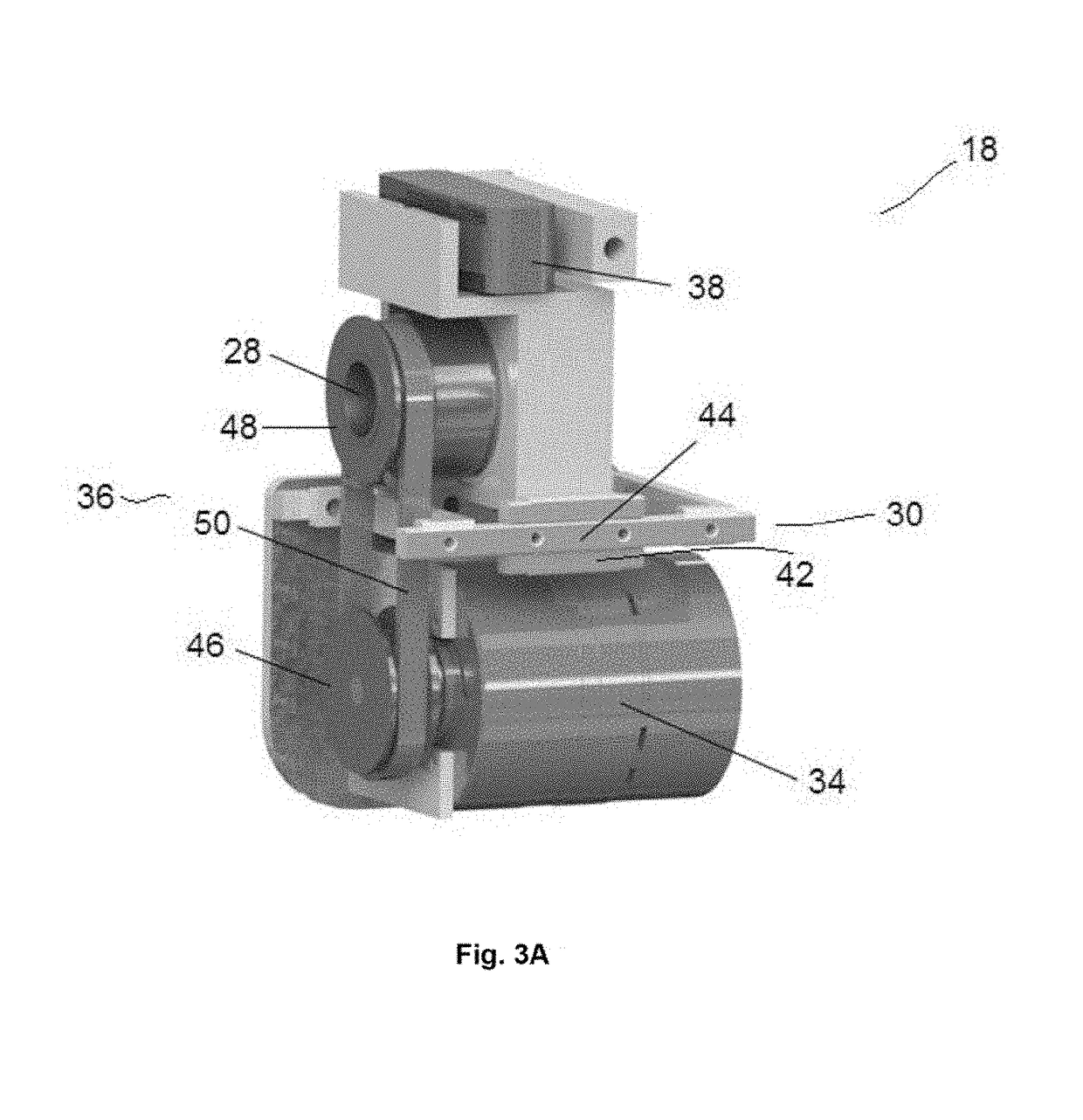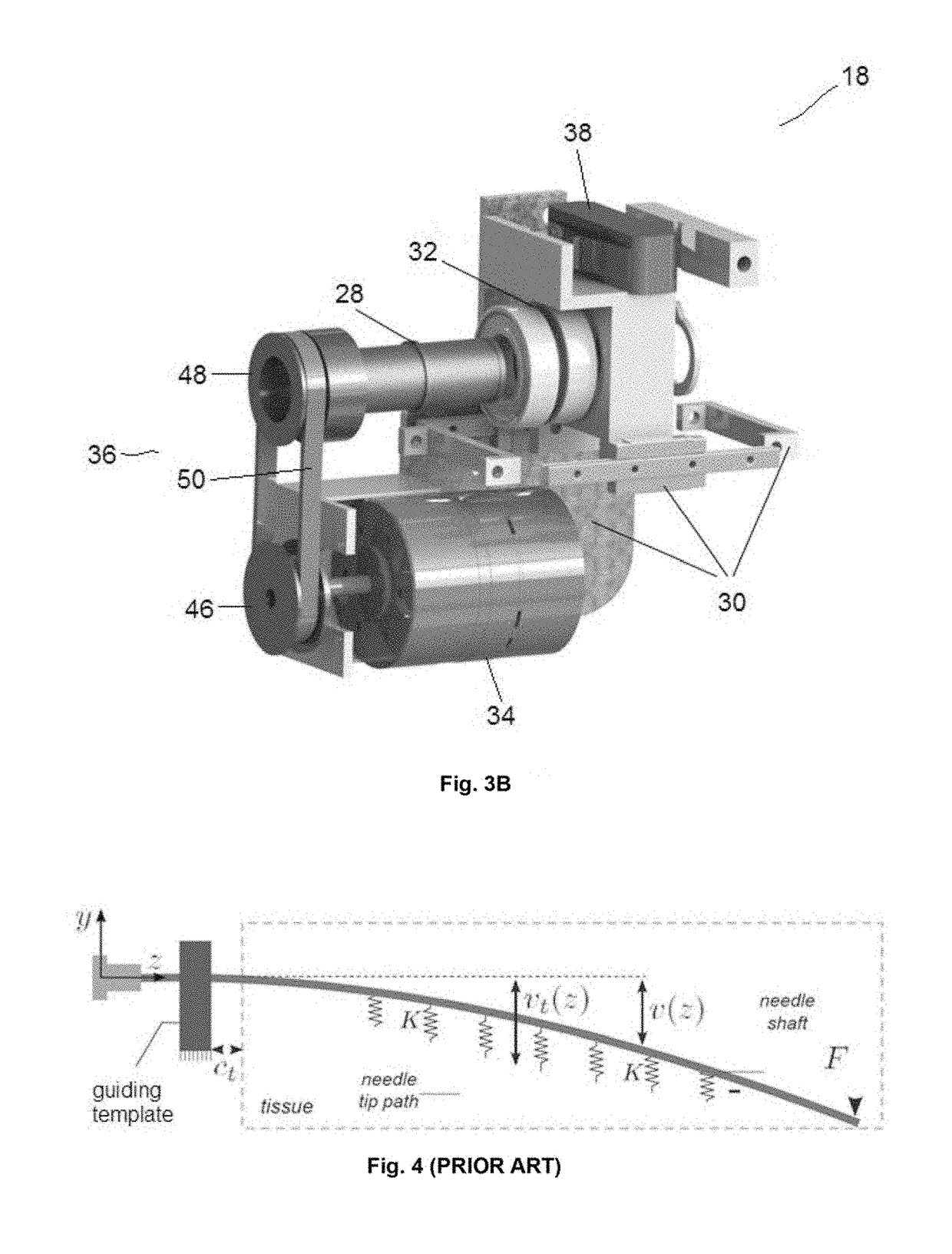Hand-held device and computer-implemented system and method for assisted steering of a percutaneously inserted needle
- Summary
- Abstract
- Description
- Claims
- Application Information
AI Technical Summary
Benefits of technology
Problems solved by technology
Method used
Image
Examples
example 1
[0131]The experimental setup used to test the prototype system is shown in FIG. 9 in phantom and ex-vivo biological tissue. A schematic depiction of the prototype system is shown in FIG. 10. In order to track the position of the handle of the device in real time, the 3D position of tracking markers added to its left is measured at 20 Hz by a dual camera optical motion tracker (BB2-BWHx60 from Claron Tech, Toronto, Canada). The needle is inserted by the handheld assistant into a piece of tissue held in a transparent container through a standard brachytherapy template grid (model D0240018BK, C.R. Bard, Covington, USA). The grid template is assumed to have a stiffness of Kp=109 Nm−1. From the measured position of the tracking markers and knowing the length of the needle, the needle insertion depth is deduced. The needle used throughout the experiments is a 200 mm long 18-gauge standard brachytherapy needle (Eckert & Ziegler Inc., Oxford, USA) with a Young's modulus of 200 GPa and a mom...
example 2
[0157]Three different tissues were used in these experiments. The first tissue was made by encasing a 130 mm long piece of porcine tissue into a mixture of 20% gelatin derived from acid-cured tissue (gel strength 300 from Sigma-Aldrich Corporation, USA) per litre of water. The gelatin was meant to create a 20 mm layer of tissue through which the needle was inserted before reaching the porcine tissue, and also to create a flat surface in order to ensure good acoustic contact between the ultrasound probe and the tissue. In the second tissue, the porcine layer was replaced with bovine tissue. Hence, the first two tissues were composed of two different layers. The third tissue was made of high friction plastisol gel (M-F Manufacturing Co., USA) mixed with 20% plastic softener. For each tissue, 15 needle insertions at different locations in the grid template followed by deposition of a single seed were performed. The seeds were deposited at a depth of 140 mm. For each tissue, a set of 15...
PUM
 Login to View More
Login to View More Abstract
Description
Claims
Application Information
 Login to View More
Login to View More - R&D
- Intellectual Property
- Life Sciences
- Materials
- Tech Scout
- Unparalleled Data Quality
- Higher Quality Content
- 60% Fewer Hallucinations
Browse by: Latest US Patents, China's latest patents, Technical Efficacy Thesaurus, Application Domain, Technology Topic, Popular Technical Reports.
© 2025 PatSnap. All rights reserved.Legal|Privacy policy|Modern Slavery Act Transparency Statement|Sitemap|About US| Contact US: help@patsnap.com



